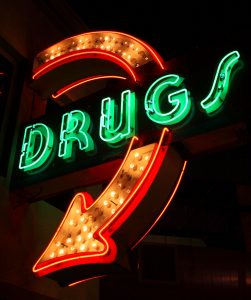1.1 What are Psychoactive Drugs?
Jacqueline Lewis and Christine Miller

Psychoactive drugs are substances that influence the functioning of the human brain, altering mood, feeling, emotion, sensation, thought, perception, and/or behaviour. They may be used for many purposes, including therapeutically, ritually, or recreationally. Caffeine, the most widely consumed psychoactive substance in the world (CAMH, 2011), is a nervous system stimulant. In moderation, it can make you more alert and/or improve your level of concentration, but in larger doses it can cause restlessness, insomnia, headaches, heart palpitations and anxiety (CISUR, 2015a). Other examples of psychoactive drugs include alcohol, tobacco, cocaine, ketamine/special K, MDMA/ecstasy, LSD and opiates.

